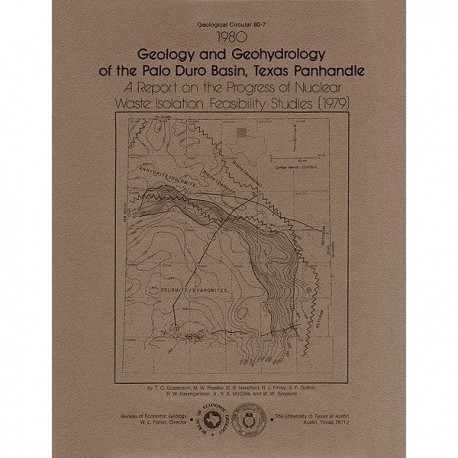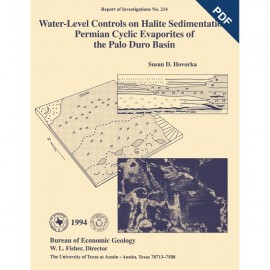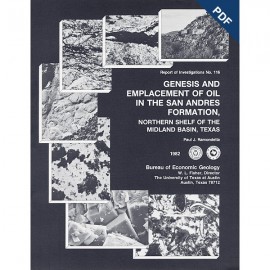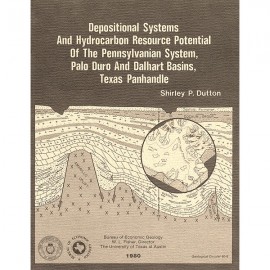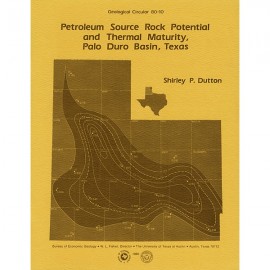Geological Circulars
-
Books & Reports
- Reports of Investigations
- Guidebooks
- Udden Series
- Geological Circulars
- Down To Earth
- Atlases of Major Oil and Gas Reservoirs
- Texas Memorial Museum Publications
- Environmental Geologic Atlas of the Texas Coastal Zone
- Mineral Resource Circulars
- Other Reports
- Seminars and Workshops
- Handbooks
- Submerged Lands of Texas
- Symposia
- Annual Reports
- Open File Reports
-
Maps & Cross Sections
- Thematic Maps
- Miscellaneous Maps, Charts & Sections
- Geologic Atlas of Texas
- STATEMAP Project Maps
- Geologic Quadrangle Maps
- Cross Sections
- Highway Geology Map
- Energy and Mineral Resource Maps
- Shoreline Change and Other Posters
- Wilcox Group, East Texas, Geological / Hydrological Folios
- Bouguer Gravity Atlas of Texas
- River Basin Regional Studies
- Featured Maps
- Posters
- Teachers & the Public
-
Geological Society Publications
- Gulf Coast Association of Geological Societies
- Alabama Geological Society
- Austin Geological Society
- Corpus Christi Geological Society
- Houston Geological Society
- Lafayette Geological Society
- Mississippi Geological Society
- New Orleans Geological Society
- South Texas Geological Society
- GCS SEPM Publications
- Historic BEG & UT Series
Geology and Geohydrology of the Palo Duro Basin, Texas Panhandle...(1979)
GC8007
For a downloadable, digital version: GC8007D.
GC8007. Geology and Geohydrology of the Palo Duro Basin, Texas Panhandle: A Report on the Progress of Nuclear Waste Isolation Feasibility Studies (1979), by T. C. Gustavson, M. W. Presley, C. R. Handford, R. J. Finley, S. P. Dutton, R. W. Baumgardner, Jr., K. A. McGillis, and W. W. Simpkins. 99 p., 54 figs., 7 tables, 1 well log, 1980. ISSN: 0082-3309. Print.
To purchase this publication as a PDF download, please order GC8007D.
ABSTRACT
Since early 1977, the Bureau of Economic Geology has been evaluating several salt-bearing basins within the State of Texas as part of the national nuclear repository program. The Bureau, a research unit of The University of Texas at Austin and the State of Texas, is carrying out a long-term program to gather and interpret all geologic and hydrologic information necessary for description, delineation, and evaluation of salt-bearing strata in the Palo Duro and Dalhart Basins of the Texas Panhandle. The program in FY 79 has been subdivided into four broad research tasks, which are addressed by a basin analysis group, a surface studies group, a geohydrology group, and a host-rock analysis group (fig. 1). The basin analysis group has de lineated the structural and stratigraphic framework of the basins, initiated natural resource assessment, and integrated data from 8,000 ft (2,400 m) of core material into salt-stratigraphy models. Salt depth and thickness have been delineated for seven salt bearing stratigraphic units. Concurrently, the surface studies group has collected ground and remotely sensed data to describe surficial processes, including salt solution, slope retreat erosion mechanisms, geomorphic evolution, and fracture system development. The basin geohydrology group has begun evaluating both shallow and deep fluid circulation within the basins. The newly formed host-rock analysis group has initiated study of cores from two drilling sites for analysis of salt and the various lithologies overlying and interbedded with salt units. This paper, a summary report of progress in FY 79, presents principal conclusions and reviews methods used and types of data and maps generated.
Keywords: Dalhart Basin, Palo Duro Basin, Texas Panhandle, Texas, waste isolation
CONTENTS
Purpose and scope
Palo Duro and Dalhart Basin studies--A summary of second-year research activities
Lithofacies and depositional environments of evaporite-bearing strata based on Randall and Swisher County cores
Mapping of facies by well log interpretation
Upper Permian salt-bearing stratigraphic units
Salt depositional systems--an example from the Tubb Formation
Salt depth and thickness studies
Petroleum source rock quality and thermal maturity
Preliminary aspects of deep-basin hydrology
Climatic analysis
Slope erosion mechanisms
Suspended sediment concentration and stream discharge relationships for the Prairie Dog Town Fork of the Red River: an approach to determine erosion rates
Shallow ground-water hydrology--a preliminary review
Rates of salt dissolution
Preliminary rates of slope retreat and salt dissolution along the eastern Caprock Escarpment of the Southern High Plains and in the Canadian River Valley
Faulting and salt dissolution
Collapse chimneys, collapse surfaces, and breccia zones
Landsat analysis of surface linear elements
References
Citation
Gustavson, T. C., Presley, M. W., Handford, C. R., Finley, R. J., Dutton, S. P., Baumgardner, R. W., Jr., and others, 1980, Geology and Geohydrology of the Palo Duro Basin, Texas Panhandle: A Report on the Progress of Nuclear Waste Isolation Feasibility Studies (1979): The University of Texas at Austin, Bureau of Economic Geology, Geological Circular 80-7, 99 p.
